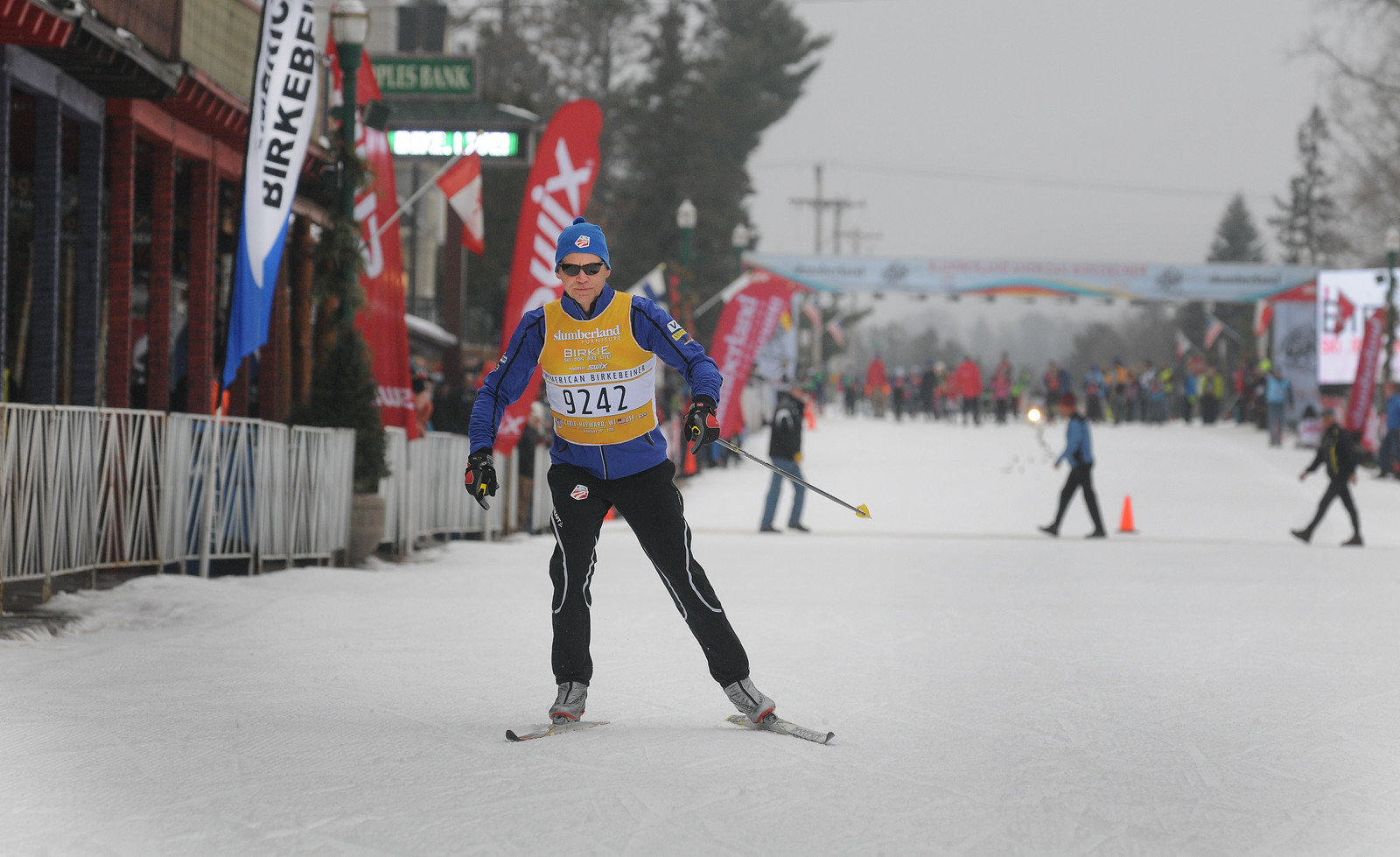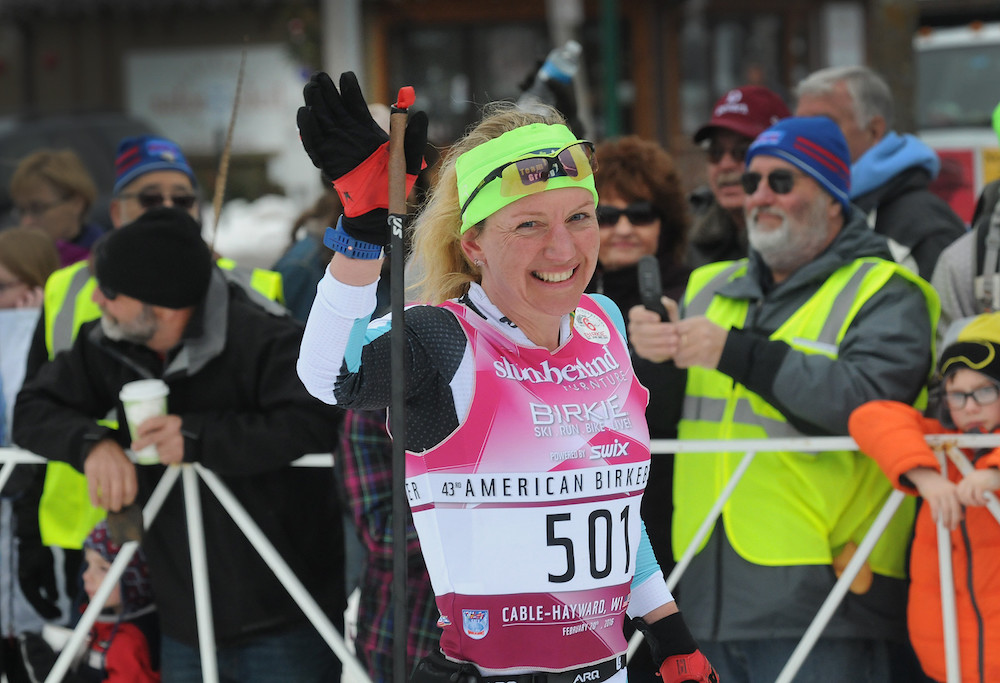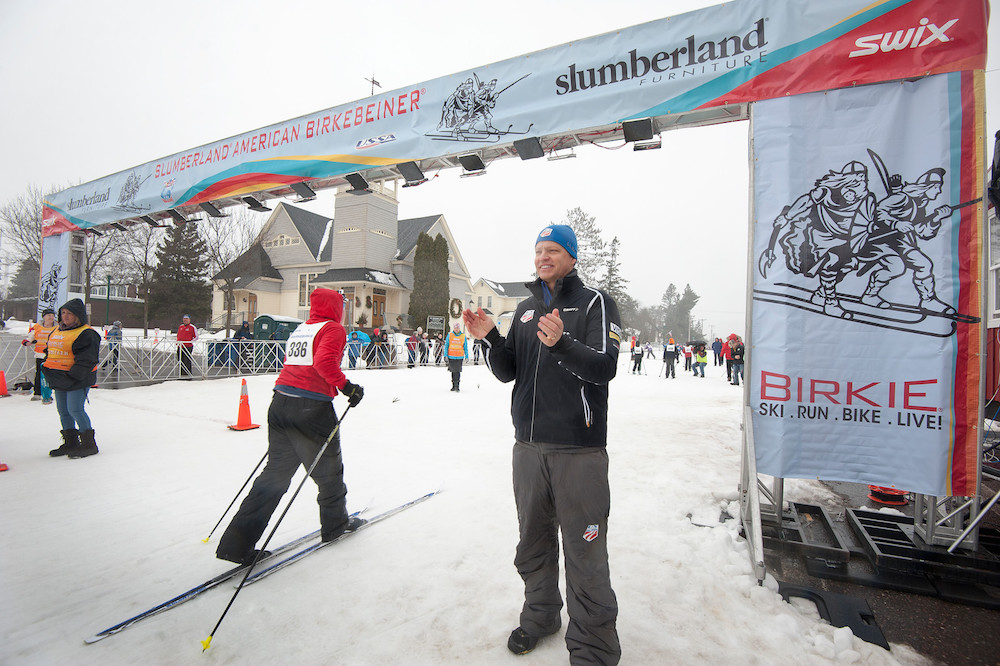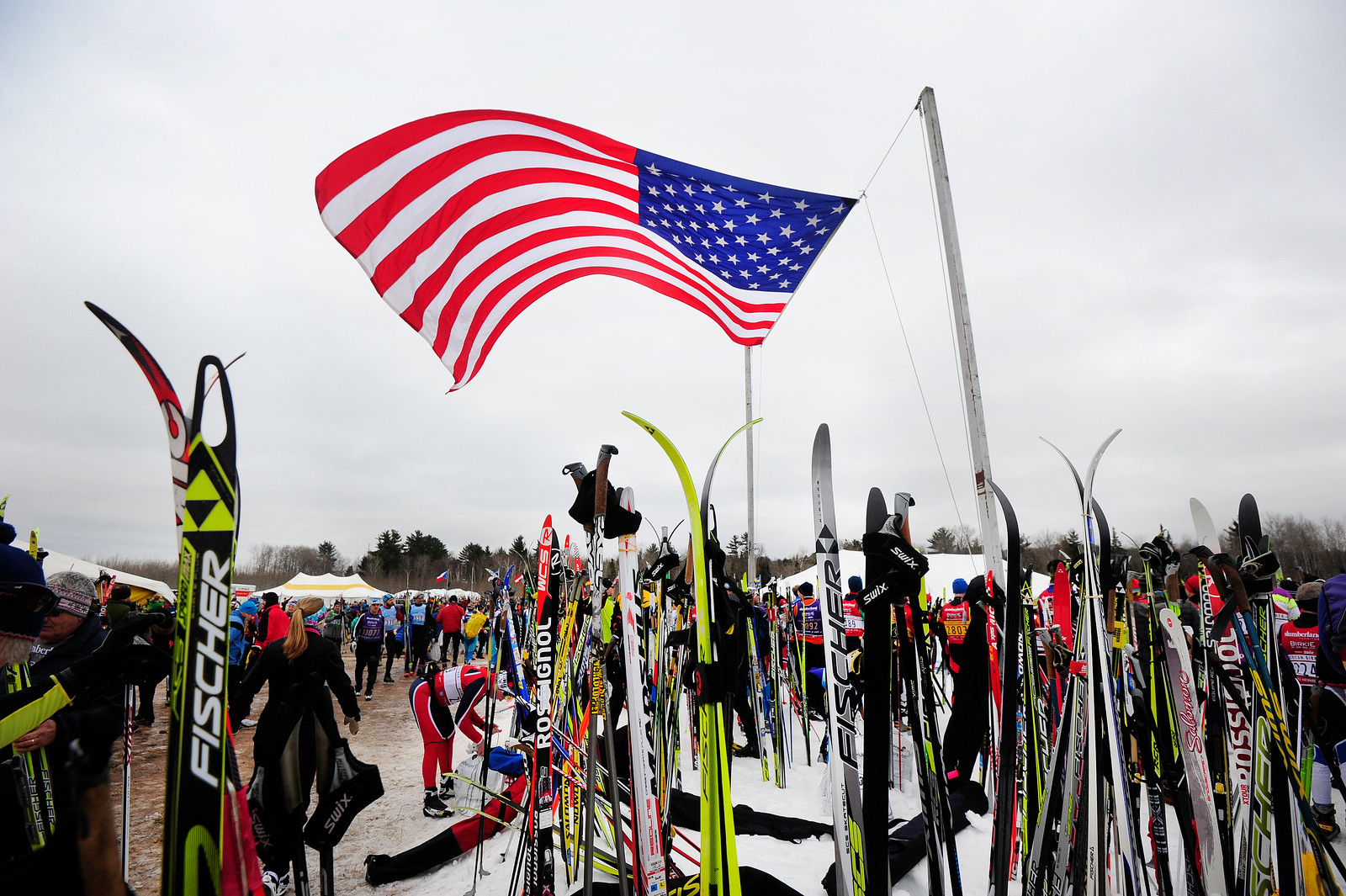
When Caitlin Gregg was the first woman across the line in the 51 kilometer 2016 American Birkebeiner, she wasn’t wearing her U.S. Ski Team suit.
Most team members don’t when they are at domestic races in the U.S., and club loyalty is one of Gregg’s trademarks. She instead represented Loppet Nordic Racing.
But just 15 minutes after she finished, there was another guy who was wearing the U.S. Ski Team colors, and he was finally crossing the start line in Wave 9. It was not only his first Birkie, but also his first cross-country ski race.
“I guess I could have pulled rank and asked them to move me up, but I wanted to see what it was like in that group,” U.S. Ski and Snowboard Association (USSA) President and CEO Tiger Shaw said in an interview on Tuesday. “There were tons of people faster than me in that group. The only challenge is on some of the uphills, you have everybody who is falling back from earlier waves who you are catching, so it’s a bit of an escalator. But that dissipated. I was nicely surprised that after 10 or 15 k, everybody had fallen into their speed.”

There was a veritable contingent of USSA folk at the Birkie this year, including Vice President Communications Tom Kelly and Nordic Domestic Programs Director Robert Lazzaroni, as well as star athlete Kikkan Randall, who didn’t race because she’s pregnant but was on hand to soak up the scene.
And what a scene it was. Shaw, a two-time Olympian and NCAA Champion alpine skier, has attended cross-country World Cup races in Europe, but the Birkie was an entirely different experience.
“It is both a world class event and a Gran Fondo,” Shaw marveled. “Meeting these people who have done the Birkie a double digit number of times, it’s a lot of people. That gives you an amazing perspective… I was able to be there for Thursday night through Sunday afternoon. I got a chance to take in the Barnebirkie and all the kids races and everything that happened on Main Street.”
And then there was the race itself. Although Shaw came to the finish hours after the first men and women, there were still die-hard fans out cheering for him and the others who started in the last wave.
“People had been there since ten o’clock cheering for the elites,” he said of crossing the lake into Hayward. “People are still standing around in their insulated boots, jumping up and down, drinking hot tea or coffee or jägermeister or whatever else, screaming and ringing bells for five hours. It was impressive. That’s cool, and it’s not easy when it’s drizzling in the 30’s, or other years when it’s below zero. I love that.”
USSA has recently partnered with the Birkie, which Kelly said resulted in “dramatic gains” in membership for the national organization this year.
Shaw was pleased to meet some of those new members. While he might be well-recognized at alpine events, this was not the case in Hayward, Wisconsin.
“I had a lot of really fun conversations,” he laughed. “Usually people didn’t recognize me, but if I was in a conversation and I introduced myself, they would kind of say, ‘oh! Well hello!’ Like, what are you doing here?”
And the CEO wasn’t just talking the talk, he was walking the walk – or skiing the ski.

“It was especially fun when I was wearing my Craft and L.L. Bean gear, either about to race or in the race or after the race, and people realized I wasn’t just there watching,” he said. “I was there competing, if I guess you could call it that. That made a difference. It just drops everybody’s guard, if they have one up.”
After skiing with septuagenarians doing their 30th Birkie and feeling his own small moments of glory when he passed other competitors, Shaw was left marveling at the scale of the event.
“There are some season-ending races for all age groups in alpine,” he explained. “The Sugar Slalom in Stowe is an example, the Loveland Derby. But you’re talking about maybe 500 or 600 participants, not 10,000. There’s no way to do something like that in alpine. I’m not sure if there’s anything equivalent in snowboarding. Jumping, not so much from a participation level, but there are a lot of spectators at the Springer Tourney in summer.”
The Birkie is an entirely different animal.
“This dwarfs anything I’ve ever seen,” Shaw said. “Especially when you think of the cumulative group which is part of it. We just ran a Big Air event at Fenway Park in Boston, where we had 27,000 people watching over two days and a handful of participants because it was an elite event. But the Birkie, if you count support people and the families of people participating, that’s probably 27,000 people there. And that’s not in a metro area.”

Speaking of elite events, Shaw is still hopeful that USSA can find a way to host a top cross-country competition in a big city. But that would be totally different than the Birkie.
“This was about participating and being part of it, feeling it, whether you are a participant, elite or otherwise, or a volunteer, or you have a kid racing,” he said. “You can see that it’s really part of people’s lives.”
Shaw, who finished in 4:49:23, enjoyed it all, and appreciated how those not racing were if anything more enthusiastic than the racers themselves.
“They were having such a good time despite it being 32 degrees and raining, which it was on Friday during most of the kids’ events,” Shaw said. “It rained half the time when we were in the race too, and nobody cared. The volunteers at all the stops, the medical personnel, the crazy people playing in bands on the side of the trail and cheering for us, the shotski group, it’s hysterical. It was fun.”
The trip illustrated many aspects of why Shaw is eager to work with the nordic community.
“There’s a lot of fans,” he noted. “Cross-country has a bigger group of participants through all the age groups than any of our sports. In alpine we don’t have racers racing their whole life. In cross-country you do. It’s a unique opportunity for the sport to empower those people, and locally they support their clubs.”
Shaw hopes that they will support USSA and the national team as well, but knows that USSA has to offer something in return. He’s working on it.

“The goal there is to figure out how USSA can best become re-involved on a large scale,” he said. “USSA kind of dwindled in relevance in cross-country below the sanctioned race level and the elite team level. We are working with everybody to see how do we help out again with the efforts that are already happening.”
Shaw also met with Birkie directors, as well as higher-ups at CXC and Loppet Nordic Racing. Those are among the clubs USSA consider models in the cross-country world.
“There’s extremely good coaches, education, and knowledge in the CXC division, especially around Minneapolis,” Shaw said. “One thing that we can do is gather together the best practices from the divisions and clubs, and combine that with what [U.S. Ski Team coaches] Chris Grover and Matt Whitcomb believe are the best practices, and distribute that nationally. We want to standardize it to raise the whole tide of instruction and coaching, technique and preparation, how to keep parents involved and keep it fun. That’s a role that we can play.”
He hopes to see USSA playing a role far greater than it has in the last decade, when the national governing body’s involvement in nordic sport was mainly at the national competitive level and with the national team itself.
“We’d love to see every cross-country skier in the country be a follower of the U.S. Ski Team and to be a USSA member if it makes sense,” he said. “But it has to be an affordable, sensible membership with the right benefits. Maybe we can one day be like USA Swimming where there isn’t a kid in a club that isn’t a member – they are ubiquitous, and they provide a lot of services. That’s what we’re trying to provide.”
As USSA works toward that goal, Shaw seemed to genuinely relish the chance to try cross-country racing out for himself in the continent’s biggest and craziest competition.
“Even though I only raced as a citizen, it helps me appreciate watching the cross-country events at all levels now,” Shaw said. “I get it about stepping on somebody’s pole, and how to get around someone at my own level. If you’re feeling strong and blow by a bunch of people, you start thinking, wow, I’m pretty good. When in fact, you’re just a citizen. But it’s thrilling nonetheless!
“It’s a taste of what it must be like to be a Kikkan or all of those elite athletes,” he concluded. “It reminded me of when I was racing, that feeling of being a contender and being able to turn it on when you want to turn it on.”
Chelsea Little
Chelsea Little is FasterSkier's Editor-At-Large. A former racer at Ford Sayre, Dartmouth College and the Craftsbury Green Racing Project, she is a PhD candidate in aquatic ecology in the @Altermatt_lab at Eawag, the Swiss Federal Institute of Aquatic Science and Technology in Zurich, Switzerland. You can follow her on twitter @ChelskiLittle.



